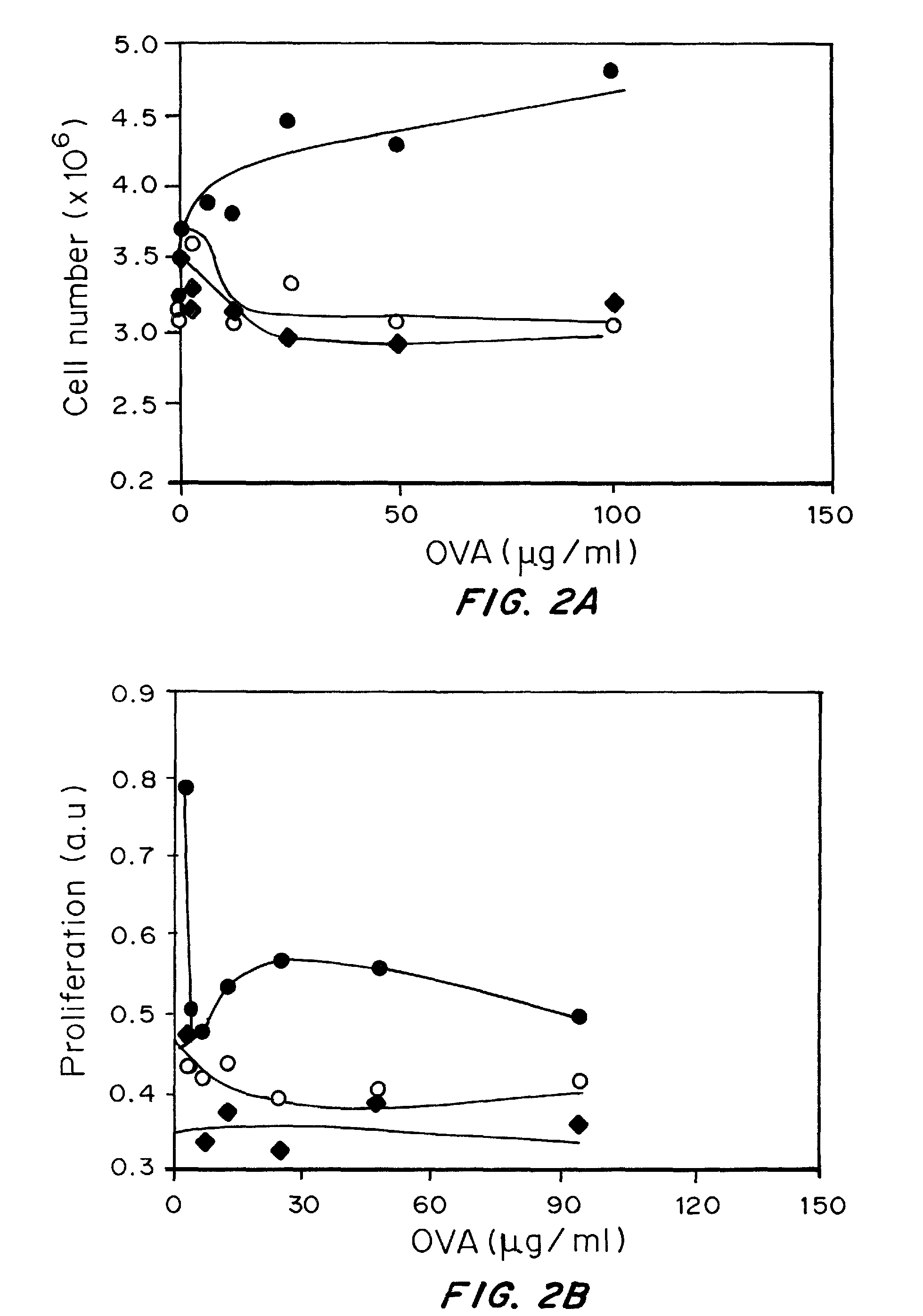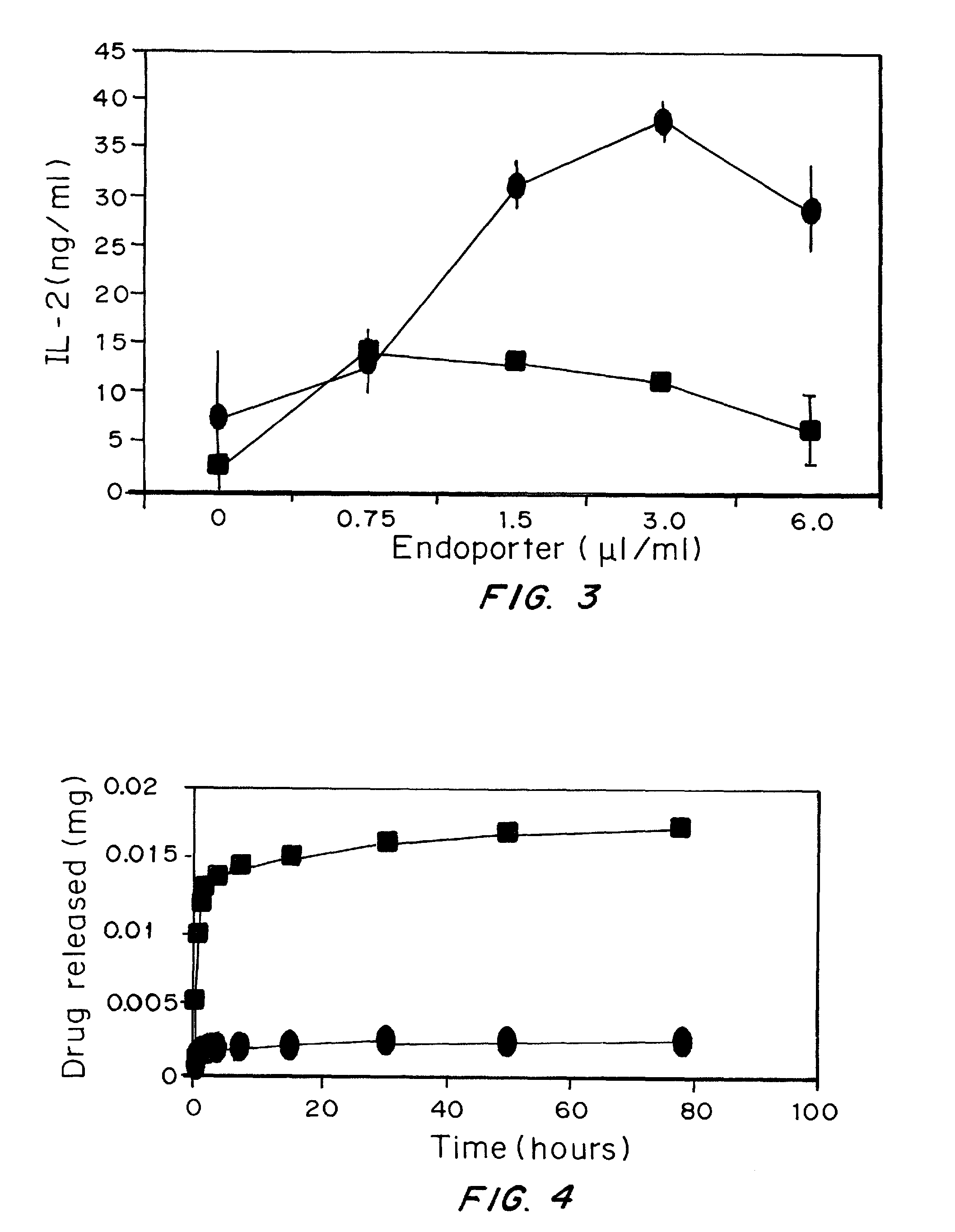Modular nanoparticles for adaptable vaccines
a vaccine composition and nanoparticle technology, applied in the field of modules of nanoparticle vaccine compositions, can solve the problems of triggering deleterious inflammatory responses, causing unnecessary deaths in many parts of the world, and attendant risks, so as to facilitate the uptake of antigens and their presentation, facilitate the ability of a vaccine to induce mucosal and systemic immunity, and enhance the effect of vaccines
- Summary
- Abstract
- Description
- Claims
- Application Information
AI Technical Summary
Benefits of technology
Problems solved by technology
Method used
Image
Examples
example 1
Immune Cell-Specific Targeting of Nanoparticles
[0180]Materials and Methods:
[0181]Cells were adjusted to a concentration of 1×107 cells / ml in complete media. Plates were coated with various concentrations of anti-CD3ε antibodies according to established protocols. 2×105 cells were plated per well. Cells were treated with 20 nM complexes either loaded or unloaded with doxorubicin and incubated at 37° C., 5% CO2. On day 3 T cell proliferation was analyzed with a colorimetric assay for quantification of cell proliferation and viability, WST-1®, according to manufacturer's protocol (Roche Diagnostics GmbH, Pennsburg, Germany).
[0182]Results:
[0183]Using avidin as an adaptor element coupled to fatty acid chains which insert readily into PLGA particles during fabrication, biotinylated antibodies and recombinant proteins that target different immune system cells were attached to the surface of the particles. These surface-modified particles interact specifically with cells and provide effecti...
example 2
Surface Modification of Nanoparticles with Immune Modulators Increases the Elicited Immune Response
[0184]Materials and Methods:
[0185]Nanoparticles were prepared by a water-oil-water emulsion method using 50:50 Poly(DL-lactide-co-glycolide) from Lactel® with an inherent viscosity of 0.59 dL / g. PLGA was dissolved in methylene chloride. For loaded particles, aqueous solutions of 10 mg chicken egg albumin (ovalbumin, OVA—antigen) was emulsified into the dissolved polymer and sonicated for 30 seconds on ice (Tekmar, Model: TMX400). The resulting water in oil emulsion was subsequently added dropwise into the surfactant (5% Polyvinyl alcohol) (PVA, Sigma-Aldrich®)) and sonicated again for 30 seconds. This was added to a stirring 0.3% PVA solution surfactant solution. After 3 hours particles were centrifuged at 12,000 RPM for 20 minutes and washed with DI water three times, frozen at −80° C., and lyophilized. LPS-coated particles were prepared with 20 mg / ml lipopolysaccharide (Sigma®, from ...
example 3
Endosome Disruption Enhances Antigen-Presentation by Dendritic Cells
[0189]Materials and Methods:
[0190]Particles prepared using the same preparation discussed in Example 2 with 100 μl of endoporter added to the emulsion at a concentration of 1 mg / ml.
[0191]Results:
[0192]Many pathogens make use of the acidic pH environment of endosomes and lysosomes to penetrate out from the confines of endocytic organelles into the cytosol. Some, in fact, do this by secreting pore-forming peptides that are low pH activated. Endoporter is a commercially available synthetic peptide that accomplishes this function (Summerton, Ann. N.Y. Acad. Sci., 1058:1-14 (2005)).
[0193]Mouse bone marrow-derived dendritic cells were incubated with soluble ovalbumin (0.1 mg / ml), a concentration that only inefficiently elicits antigen presentation to CD8 T cells. Inclusion of increasing concentrations of endoporter enhances cross presentation by 10-100-fold (depending on background) to the MHC class I-restricted, ovalbumi...
PUM
| Property | Measurement | Unit |
|---|---|---|
| diameter | aaaaa | aaaaa |
| diameter | aaaaa | aaaaa |
| diameter | aaaaa | aaaaa |
Abstract
Description
Claims
Application Information
 Login to View More
Login to View More - R&D
- Intellectual Property
- Life Sciences
- Materials
- Tech Scout
- Unparalleled Data Quality
- Higher Quality Content
- 60% Fewer Hallucinations
Browse by: Latest US Patents, China's latest patents, Technical Efficacy Thesaurus, Application Domain, Technology Topic, Popular Technical Reports.
© 2025 PatSnap. All rights reserved.Legal|Privacy policy|Modern Slavery Act Transparency Statement|Sitemap|About US| Contact US: help@patsnap.com



